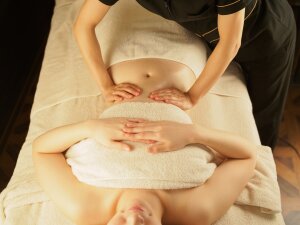What Are Lymphatic Drainage Massages?
Lymphatic drainage massage therapy uses light pressure and rhythmic movements to encourage lymph drainage, whereas regular massages focus on the muscles. Lymph is the fluid that flows through the lymphatic system, a system composed of lymph vessels and lymph nodes. Typically, the lymphatic system collects lymph and returns it to the heart via circulation. When the lymphatic system is disrupted, lymph collects in the arms and legs, leading to swelling.
Lymph fluid contains white blood cells and other cells to build up the immune system and fight infection. There are hundreds of lymph nodes throughout the body, but they are mainly concentrated in the neck, armpits, chest, belly and groin area.
“Most people at some point in their life can feel their lymph nodes that feel like little jelly beans under the skin when they are swollen and fighting infections and germs,” says Audrey Blanchard, a licensed massage therapist with the Mayo Clinic in Phoenix, Arizona.
Unlike the circulatory system, the lymph does not have a pump; it relies on muscle movement to move fluid. Conditions like surgery or injury can cause the lymph fluid to stagnate and sometimes become thicker.
Lymphatic massages can help:
- Decrease stress.
- Improve circulation of body fluids to reduce swelling.
- Expedite the removal of waste and toxins from the body’s tissues.
- Stimulate the lymphatic system to increase lymph circulation.
What to Expect
Unlike Swedish massages that use oil to reduce friction with the skin, there is no oil applied during lymphatic drainage massages. Soft strokes should be directed toward the heart – so the therapist might start at the toes and fingers and work their way up.
“Lymphatic drainage causes no pain, is very relaxing and it is not uncommon for people to fall asleep or nearly fall asleep during treatment,” Degelman says.
It may take a few sessions to start seeing results from lymphatic drainage massages. If you have several sessions without any changes, talk to your therapist or health care provider about other treatment options.
What Do Lymphatic Massages Treat?
Lymphatic drainage massage is used in sports medicine settings, post-surgery cancer cases and for cosmetic reasons. For individuals who have undergone breast cancer surgery and had lymph nodes removed, lymphatic drainage massages can be very helpful. Once those lymph nodes are removed, lymphedema can frequently occur. One study examined the incidence of lymphedema among individuals with breast cancer and found a 42% rate during a five-year period following treatment.
“Lymphatic drainage is helpful in conditions where patients have limited mobility, and edema build up is likely a result of limited movement, like recovering from certain surgeries,” Degelman adds. “It can be helpful in reducing swelling after sports injuries like ankle or wrist sprains.”
Common conditions lymphatic drainage massage may be used for include:
Cosmetic
Lymphatic drainage massage can help promote tissue regeneration to help improve the skin’s appearance and help, in some cases, promote hair regrowth.
- Acne.
- Cellulite
- Hair loss.
- Swollen eyes.
- Spider veins.
Sports injuries
The goal is to help broken or fractured bones and muscles by promoting and restoring optimal blood and lymphatic flow to the injured area.
- Dislocations.
- Fractures.
- Orthopedic injuries.
- Tendonitis.
- Torn muscles.
Surgery
Lymphatic drainage massages help prevent excess swelling and pain to improve recovery from surgery.
Other conditions
Does Lymphatic Drainage Massage Work?
There’s a lack of rigorous research studying whether lymphatic drainage massage can reduce swelling and eliminate toxins. Lymphatic drainage massage remains more of an art than science in the absence of well-designed studies to examine its true efficacy.
Several small studies and reports have shown benefits of using lymphatic drainage massage with other interventions. One study examined two groups of individuals with wrist bone fractures. Both groups received standard of care while one group also received 10 sessions of lymphatic drainage massage. The researchers found that those who received massages had a statistically significant decrease in swelling in the injured wrist than the other group.
“Animal model experiments have shown promise, using rats and canines injecting dye into lymph vessels and watching the lymph nodes clear the dye more effectively after lymphatic drainage massage,” Degelman explains.
When to Avoid Lymphatic Drainage Massages
In most cases, lymphatic drainage massages are safe with low risk of harm when used properly. However, some people complain of headaches, nausea and fatigue. When that happens, you should talk to your therapist or health care provider about managing side effects.
There are certain situations and conditions that should not be mixed with lymphatic drainage massages, including active infections. “Make sure to wait till infections and fever subside before getting a lymphatic drainage massage,” Blanchard says.
There are certain precautions to follow to maintain healthy outcomes from a massage. Experts recommend avoiding lymphatic drainage massages when these other conditions are present:



